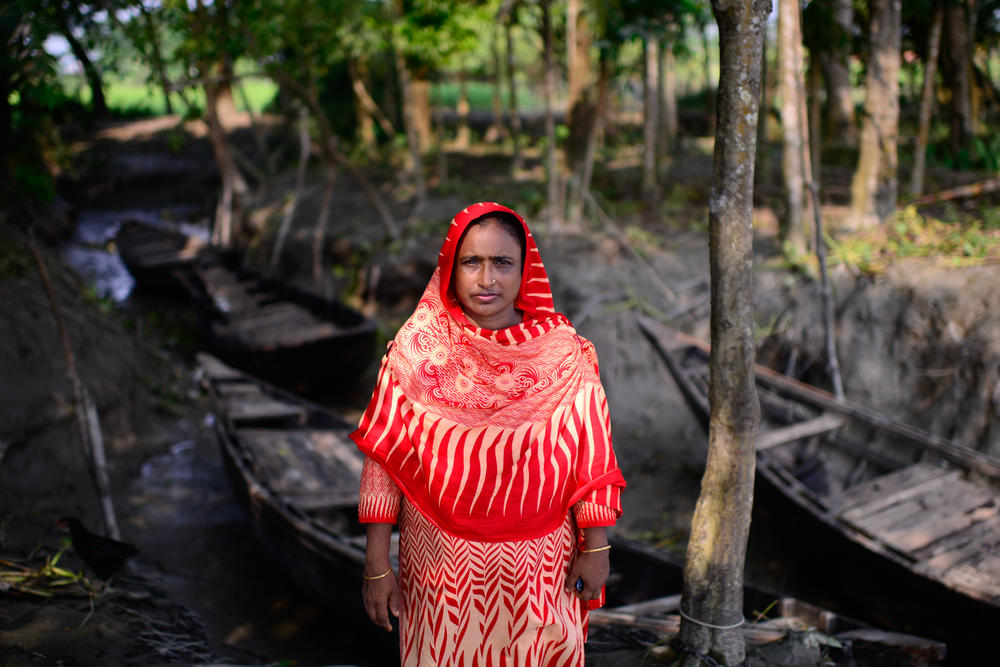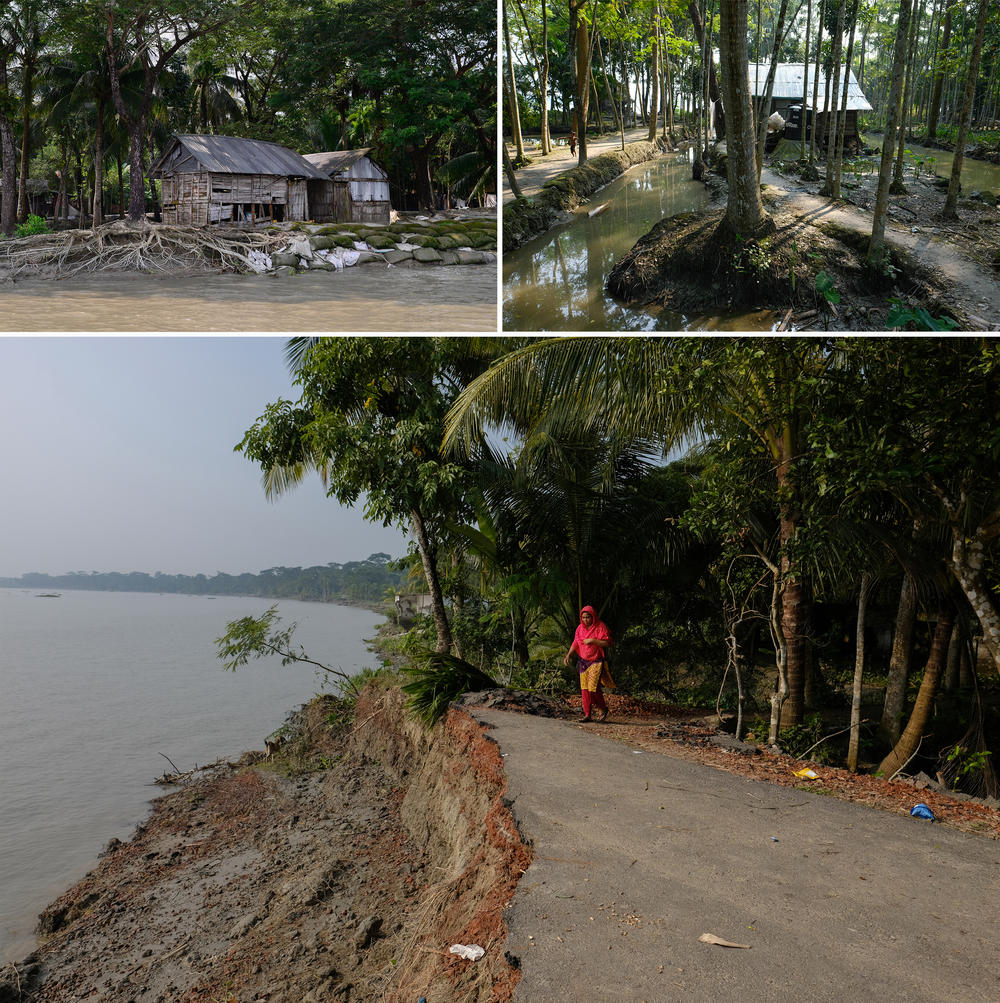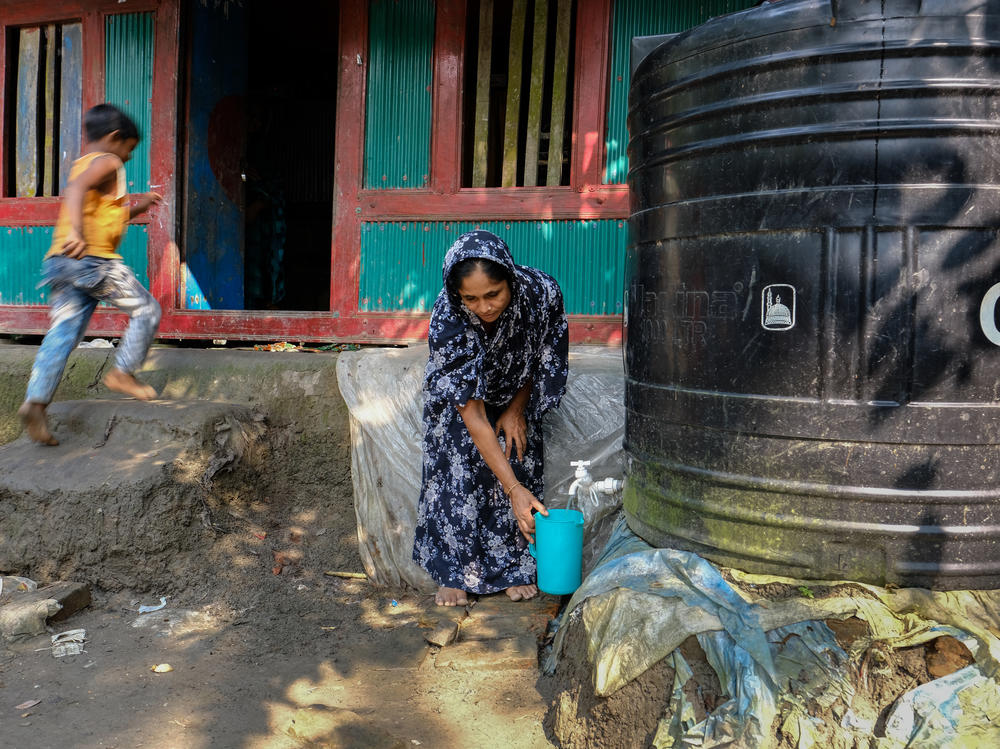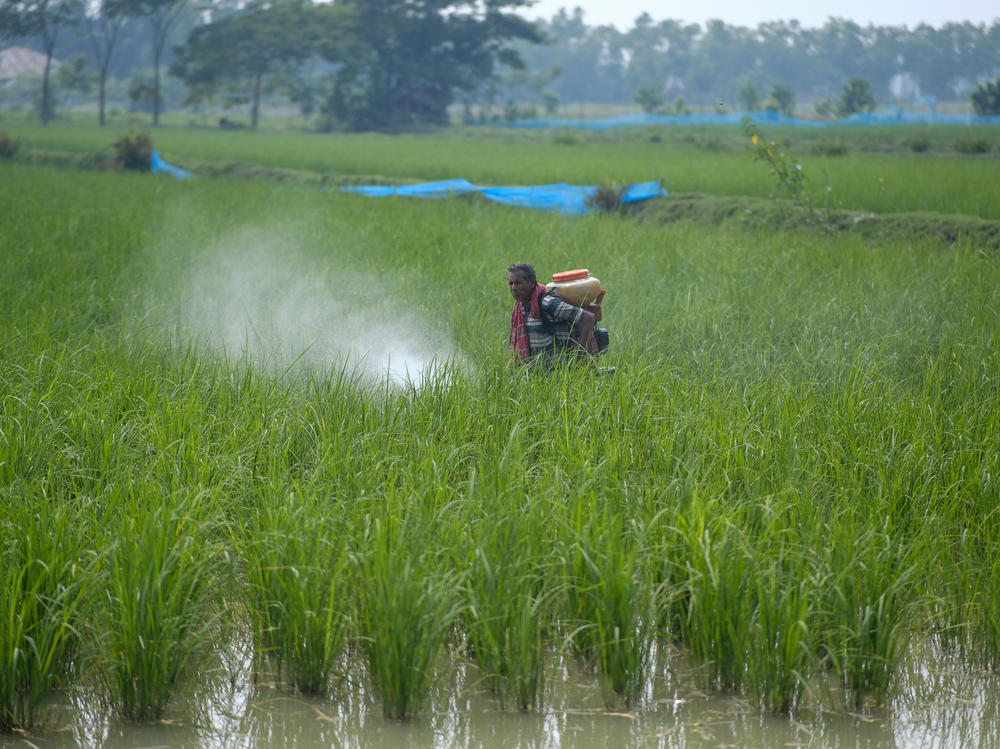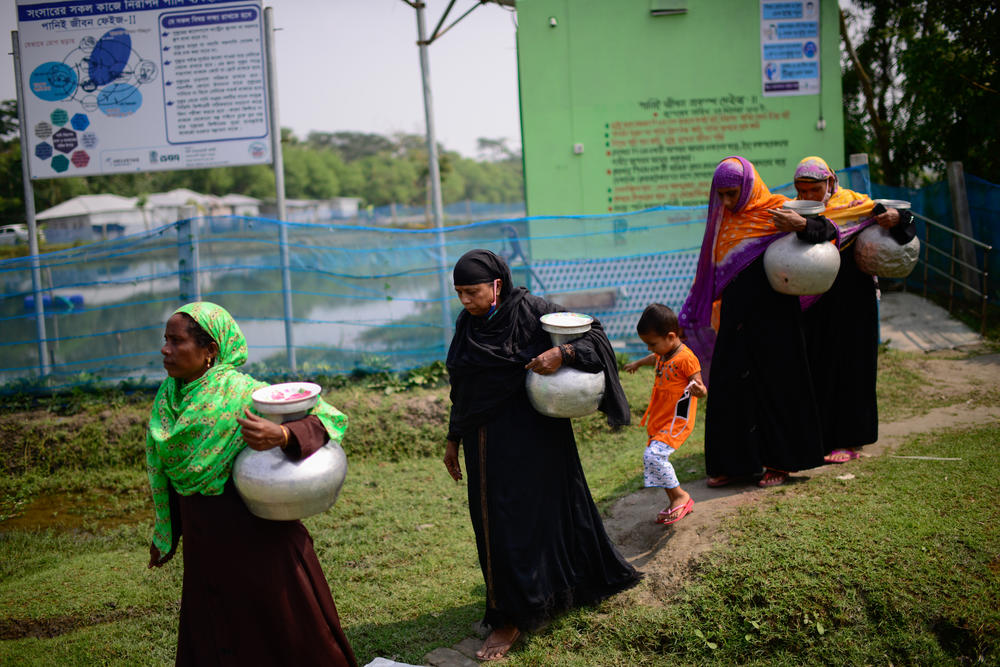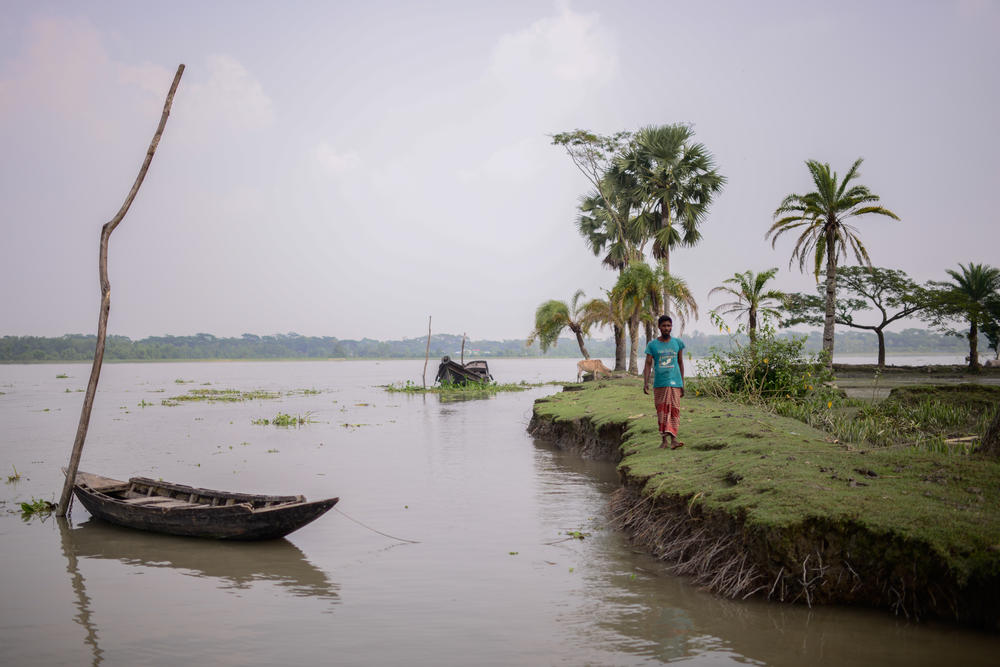Section Branding
Header Content
PHOTOS: Cyclones and salty water are a threat. These women are finding solutions
Primary Content
Sufia Khatun says big cyclones used to hit her community of Morrelganj, in southwest Bangladesh, once every quarter-century or so. Now, she says, "we experience a big cyclone [every] two to three years, a smaller cyclone almost every year." The community needs stronger defenses from the assault of wind and water, she says; otherwise the region could become uninhabitable.
What's especially galling is the fact that it's an unnatural disaster. The storms are more intense, and the sea has risen, because richer countries far away have released enormous amounts of heat-trapping gases into the atmosphere by burning coal, oil and gas. "We [in Bangladesh] don't contribute even 1% of global [greenhouse gas] emissions," says Ashish Barua, a program manager for Helvetas, a Swiss development organization that works in Morrelganj. "I'm not making the problem, but I'm suffering. [It's] what we call climate injustice."
This part of Bangladesh is a river delta, formed by a web of waterways that wind their way toward the Bay of Bengal. When the cyclones hit, the storms carry huge volumes of saline water upriver from the sea. The surge of water erodes levee-like structures known as embankments, flooding rice paddies and contaminating ponds that people have traditionally relied on for drinking water. "That saline water is impacting our crops, livelihood, fishing, everything," Khatun says through an interpreter on an early-morning Zoom call.
As a result, she says, rice paddies that once delivered three harvests annually now lie barren for most of the year. Household gardens also have been damaged, depriving people of home-grown food. Chronic illness is on the rise because of contaminated water.
With farming crippled, about 60% of the men in this community have left to find work elsewhere, she says. "Mainly they go to Dhaka, the capital city, or Chattogram. People even migrate to India, to Bangalore or Kolkata."
Khatun helps lead an organization called Mothers Parliament, which is pushing for better water infrastructure in Bangladesh's coastal region. And if she had a chance to speak to the international climate summit currently taking place in Glasgow, Scotland, she knows what she'd say. Her demands don't focus on reducing greenhouse gas emissions; she wants help dealing with the consequences of climate change that already are underway.
"There are two clear demands," she says, and they're directed both toward Bangladesh's government and international governments and charities. She wants help rebuilding embankments that are supposed to hold back the surge of saline water, preventing it from flooding fields and homes. Failing embankments are the root cause of the problem, she says. "If [they are] repaired and rightly maintained, then all other problems will be solved." In addition, she wants better infrastructure for providing safe drinking water.
Her recipe for survival isn't universally accepted, at least for the long term. Water experts still debate the merits of embankments and whether they can be an enduring solution to the area's water problems. What's undisputed, though, is this region's need to adapt to a changing climate.
In many ways, Bangladesh has made remarkable progress in adaptation. There's now a system that sends out warnings of impending cyclones, and a network of sturdy cyclone shelters where people can find shelter. "We have the most effective cyclone warning and shelter program in the world," says Saleemul Huq, director of the International Centre for Climate Change and Development (ICCCAD) in Dhaka. "Tens of thousands of people lost their lives in previous years. Nowadays, we can give warnings and evacuate people in the millions."
Researchers have developed new varieties of crops that are more suited to growing during seasons of the year when there's less risk of flooding, and some that can tolerate more saline water, although Khatun says that only a small minority of farmers have received these seeds so far. Some villagers are growing home vegetables in raised containers, rather than in saline-contaminated soil. During the monsoon season, many are capturing and using clean rainwater.
In fact, Bangladesh's entire economy is a recent success. It has been growing rapidly, fueled by a growing textile industry in the larger cities. Life expectancy is up, as are measures of educational opportunity, and child mortality is down. The World Bank reclassified the country from "low income" to "lower-middle-income."
With that growth comes increased energy use and greenhouse emissions. In fact, Bangladesh recently told the United Nations that in a "business as usual scenario," the country's carbon dioxide emissions from energy would triple over the next ten years. The country still contributes only a tiny amount to global carbon emissions, but its share is growing.
As climate change accelerates, though, the fate of its coastal regions remains deeply uncertain. "If we cannot repair the embankments, in the future the Morrelganj area will be completely off the map," Sufia Khatun says.
Copyright 2021 NPR. To see more, visit https://www.npr.org.
